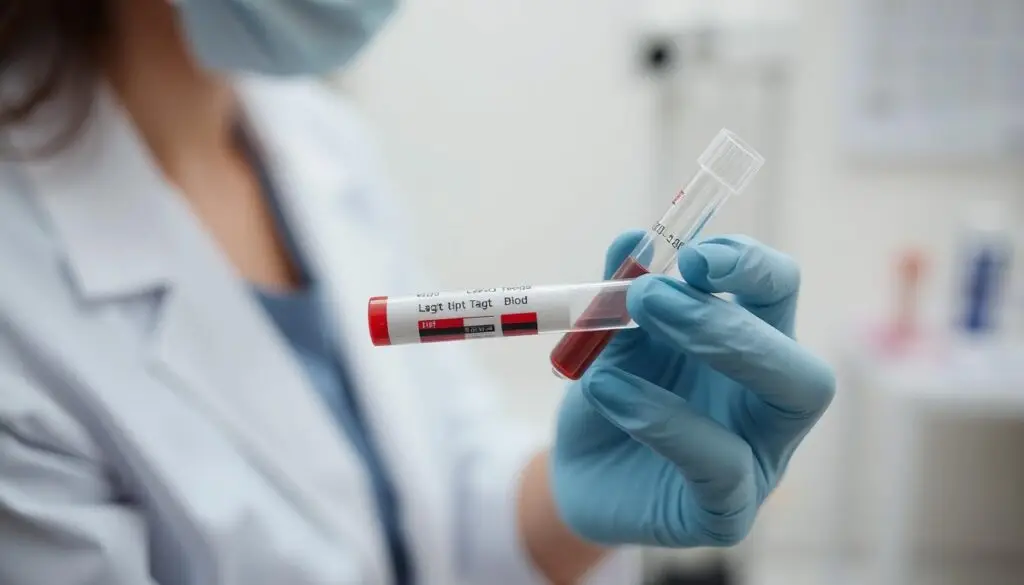Did you know that by the age of 40, nearly 90% of women experience some degree of hormonal fluctuations related to perimenopause? As you enter your midlife years, it’s important to understand the natural shifts in your body. These changes can impact your overall well-being.
Hormonal fluctuations during perimenopause and menopause can lead to a wide range of symptoms. These include hot flashes, night sweats, mood swings, and sleep disturbances. While these changes are a normal part of aging, they can be challenging to navigate without the right information and support.
In this article, we’ll explore the menopausal transition in depth. We’ll discuss common symptoms, hormonal imbalances, and effective management strategies. By understanding what to expect and how to cope with these changes, you can embrace your midlife years with confidence and vitality.
Key Takeaways
- Hormonal fluctuations are a natural part of aging for women over 40
- Perimenopause and menopause can cause a variety of physical and emotional symptoms
- Understanding hormonal changes is key to managing midlife health and well-being
- Effective strategies exist for coping with menopausal symptoms and maintaining overall health
- Embracing midlife with knowledge and support can lead to a positive, empowering experience
Understanding the Menopausal Transition
Women in their 40s may start to notice changes due to the menopausal transition. This process is marked by hormonal shifts, leading to symptoms and physical changes. Knowing the difference between perimenopause and menopause is key to understanding this phase.
Defining Perimenopause and Menopause
Perimenopause is the time before menopause starts. It can last years, with women experiencing irregular periods and hormone swings. Symptoms include hot flashes, mood changes, and trouble sleeping. Menopause is when a woman hasn’t had a period for 12 months.
“The menopausal transition is a natural part of aging that every woman will experience. Embracing this change and seeking support can help you navigate it with greater ease and confidence.”
Average Age of Menopause Onset
The average age for menopause is 51, but it varies. Some women may start as early as their 30s or as late as their 60s. Factors that can affect when menopause starts include:
- Genetics
- Smoking
- Certain medical conditions or treatments
| Stage | Average Age Range | Key Characteristics |
|---|---|---|
| Perimenopause | Mid-40s to early 50s | Irregular periods, hormonal fluctuations, onset of menopausal symptoms |
| Menopause | Average age 51 | 12 months without a menstrual period, marked decline in estrogen levels |
| Post-menopause | After menopause onset | Continued hormonal changes, increased risk of certain health conditions |
The menopausal transition is a gradual change. Every woman’s experience is different. By understanding perimenopause and menopause, you can prepare for the changes. This way, you can thrive during this important time.
Common Symptoms of Hormonal Changes
As you enter your 40s, hormonal changes can cause various symptoms. These can impact your daily life. Common symptoms include hot flashes, night sweats, mood swings, and weight gain.
Hot flashes are sudden feelings of intense heat. They are often accompanied by sweating and flushing. These can happen at any time, even at night, and may last from seconds to minutes. Night sweats are similar but happen during sleep, making you wake up drenched in sweat. These symptoms are due to the body’s response to decreasing estrogen levels.
Mood swings are another common symptom. You might feel more irritable, anxious, or depressed than usual. These emotional changes can be hard to manage and may affect your relationships. It’s important to remember that these mood swings are a normal part of menopause and to seek support when needed.
Many women also gain weight in their 40s, often around the waistline. This is due to a slower metabolism, less muscle mass, and hormonal changes that promote fat storage. To fight weight gain, consider the following:
- Engage in regular physical activity, including both cardio and strength training
- Eat a balanced diet rich in fruits, vegetables, lean proteins, and whole grains
- Practice portion control and mindful eating habits
- Manage stress through relaxation techniques like yoga or meditation
| Symptom | Prevalence | Management Strategies |
|---|---|---|
| Hot Flashes | 60-80% of women | Dress in layers, avoid triggers, consider HRT |
| Night Sweats | 50-70% of women | Keep bedroom cool, use breathable bedding, consider HRT |
| Mood Swings | 40-60% of women | Practice stress management, seek support, consider therapy |
| Weight Gain | 30-50% of women | Engage in physical activity, eat a balanced diet, practice portion control |
“Embracing the changes that come with perimenopause is an important step in maintaining overall health and well-being during this transitional period.” – Dr. Susan Hardwick, Women’s Health Specialist
Remember, these symptoms are a normal part of aging for women. By understanding and managing these symptoms, you can navigate this period with more ease and confidence.
Estrogen and Progesterone Imbalances
Women in their 40s often see big changes in their hormones, like estrogen and progesterone. These changes can cause many symptoms. They can mess with your periods, mood, sleep, and even your skin and hair. Knowing how these hormones work and how they change can help you deal with these changes better.
Impact on Menstrual Cycles
One big change is in your menstrual cycles. As you get closer to menopause, your periods might get irregular. They could be shorter or longer than before. You might also notice changes in how much you bleed each month. These changes happen because estrogen levels are all over the place.

Effects on Mood and Sleep
Hormonal changes can also mess with your mood and sleep. Many women feel mood swings, get irritable, or even feel depressed. These feelings come from the ups and downs in estrogen and progesterone levels. These hormones help control your brain’s chemicals. Hormonal shifts can also mess with your sleep, causing insomnia or waking up a lot at night.
Skin and Hair Changes
As estrogen levels drop, you might see changes in your skin and hair. Estrogen keeps your skin elastic and moist. Without enough, your skin can get dry, wrinkle, and sag. Hair might also get thinner or fall out more easily because of hormonal changes. Here’s a table showing some common skin and hair changes:
| Symptom | Cause |
|---|---|
| Dry, itchy skin | Decreased estrogen levels |
| Fine lines and wrinkles | Reduced collagen production |
| Thinning hair | Hormonal imbalances |
| Increased facial hair | Progesterone imbalance |
To learn more about how hormone imbalances affect women over 40, it’s key to track your symptoms. Talking to a healthcare professional can help. They can create a plan to help you manage these changes and stay healthy during this time.
Managing Hot Flashes and Night Sweats
Women in their 40s often face hot flashes and night sweats due to hormonal changes. These symptoms can be uncomfortable and disrupt daily life. But, there are ways to manage them effectively.
Triggers and Lifestyle Modifications
Knowing and avoiding triggers can lessen hot flashes and night sweats. Common triggers include:
- Spicy foods
- Caffeine and alcohol
- Stress and anxiety
- Tight clothing
- Hot environments
Simple lifestyle changes can also help. Try these tips:
- Wear loose, breathable clothing made from natural fibers like cotton
- Keep your bedroom cool and well-ventilated
- Practice relaxation techniques such as deep breathing or meditation
- Maintain a healthy weight through a balanced diet and regular exercise
Non-Hormonal Treatments
Non-hormonal treatments can also help with hot flashes and night sweats. Some options include:
| Treatment | Description |
|---|---|
| Low-dose antidepressants | Certain SSRIs and SNRIs can reduce hot flash frequency and severity |
| Gabapentin | An anti-seizure medication that may help with hot flashes and sleep disturbances |
| Clonidine | A blood pressure medication that can decrease hot flash intensity |
| Cognitive-behavioral therapy (CBT) | A type of therapy that helps change thought patterns and behaviors related to hot flashes |
“Many women find relief from hot flashes and night sweats through a combination of lifestyle modifications and non-hormonal treatments. It’s important to work with your healthcare provider to develop a personalized management plan.”
Hot flashes and night sweats are common during menopause. By making lifestyle modifications and trying non-hormonal treatments, you can manage these symptoms. This can greatly improve your quality of life.
Understand how hormonal fluctuations during women’s over 40s
Women in their 40s often see big changes in their hormones. These changes can cause many symptoms and health issues. Knowing how your body reacts to these changes is key to staying healthy during this time.

Hormonal Testing and Diagnosis
If you think hormonal imbalances are affecting your life, talk to your doctor. They might suggest hormone tests to check your estrogen, progesterone, testosterone, and more. Tests like blood, saliva, and urine tests are common.
Your doctor will look at the test results and create a plan just for you. They’ll consider your health history and needs. Regular tests help see if treatments are working and keep your hormone levels right.
Importance of Tracking Symptoms
Tracking your symptoms is also important. Keep a journal of changes in your cycle, mood, sleep, and any discomforts. This helps spot patterns and what might be causing them. It lets you make better choices for your lifestyle.
Some symptoms to watch include:
| Symptom Category | Specific Symptoms |
|---|---|
| Menstrual Changes | Irregular periods, heavy bleeding, spotting |
| Mood Disturbances | Irritability, anxiety, depression, mood swings |
| Sleep Issues | Insomnia, night sweats, fatigue |
| Physical Discomforts | Hot flashes, vaginal dryness, joint pain |
Sharing your symptom data with your doctor helps you find the best ways to handle hormonal changes. This way, you can improve your health and well-being together.
“Menopause is not a disease. It’s a natural life transition that requires understanding, support, and sometimes medical intervention.”
– Dr. Susan Hardwick-Smith, Gynecologist and Author
Weight Gain and Metabolic Changes
Women in their 40s may start to gain weight, mainly around the midsection. This is due to hormonal changes and age-related metabolic shifts.
Estrogen, the main female hormone, helps control body weight and fat distribution. As estrogen levels drop during menopause, it’s harder to keep a healthy weight. Also, aging leads to less muscle and a slower metabolism, making calorie burning tough.

To fight midlife weight gain and keep metabolism healthy, try these tips:
- Do regular physical activity, like cardio and strength training, to build muscle and boost metabolism.
- Eat a balanced diet with fruits, veggies, whole grains, lean proteins, and healthy fats for essential nutrients.
- Control portion sizes and eat mindfully to avoid too many calories.
- Reduce stress with yoga, meditation, or deep breathing to prevent weight gain and metabolic issues.
Focus on a healthy lifestyle and adjust your diet and exercise to handle midlife metabolic changes. This way, you can keep a healthy weight during this time.
Maintaining Bone Health During Midlife
Women in their 40s and beyond face changes that affect their bones. Estrogen, important for strong bones, drops during menopause. This raises the risk of osteoporosis. But, there are ways to keep your bones healthy during this time.
Osteoporosis Risk Factors
Several factors can up your risk of osteoporosis, including:
- Family history of osteoporosis
- Low body weight or small frame
- Smoking and excessive alcohol consumption
- Sedentary lifestyle
- Certain medications, such as corticosteroids
Calcium and Vitamin D Supplementation
Calcium and vitamin D are key for strong bones. Women over 50 need 1,200 mg of calcium and 600-800 IU of vitamin D daily. Add calcium-rich foods like:
| Food | Calcium Content (mg) per serving |
|---|---|
| Plain low-fat yogurt (8 oz) | 415 |
| Sardines, canned in oil, with bones (3 oz) | 324 |
| Skim milk (8 oz) | 299 |
| Tofu, firm, made with calcium sulfate (½ cup) | 253 |
| Kale, fresh, boiled (1 cup) | 179 |
Vitamin D comes from sunlight, fatty fish, egg yolks, and fortified foods. If diet alone can’t meet your needs, talk to your doctor about supplements.
Weight-Bearing Exercises
Regular weight-bearing exercises help keep bones strong and lower osteoporosis risk. Try:
- Walking, jogging, or hiking
- Dancing
- Tennis or pickleball
- Strength training with weights or resistance bands

Do at least 30 minutes of weight-bearing exercise most days. Start slow and increase intensity and duration to avoid injury.
“Osteoporosis is a silent disease until it is complicated by fractures – fractures that can occur following minimal trauma. Prevention is the key.” – Felicia Cosman, MD, Medical Director of the Clinical Research Center at Helen Hayes Hospital
Focus on calcium and vitamin D, do weight-bearing exercises, and manage risk factors. These steps help keep your bones strong during midlife and beyond.
Hormone Replacement Therapy (HRT) Options
Menopause can be tough, and you might think about hormone replacement therapy (HRT). HRT can ease symptoms like hot flashes and vaginal dryness by adding back hormones. But, it’s important to think about the good and bad before choosing HRT.

Talking to your doctor is key when thinking about HRT. They can figure out the best type and amount for you. Eating right is also important for managing menopause symptoms.
Benefits and Risks of HRT
HRT can help in many ways, like:
- Lessening hot flashes and night sweats
- Improving vaginal moisture and sex comfort
- Lowering osteoporosis risk and fractures
- Maybe better mood and thinking
But, HRT also has downsides, like:
- Higher breast cancer risk, mainly with estrogen and progestin
- Small chance of heart disease, stroke, and blood clots
- Side effects like bloating, breast tenderness, and irregular periods
Types of HRT: Systemic vs. Local
There are two main HRT types: systemic and local. Systemic HRT uses estrogen or estrogen and progestin in pills, patches, or gels. It helps with many symptoms by spreading hormones all over the body.
Local HRT, like creams or rings, targets the vagina. It’s mainly for vaginal dryness and is often used in lower doses than systemic HRT.
“The decision to use hormone replacement therapy should be based on a complete look at your risks and benefits, and what you value most.” – Dr. Jane Doe, Gynecologist
Natural Remedies for Menopausal Symptoms
As you go through menopause, you might look for natural ways to feel better. There are many options, like herbal supplements, acupuncture, and meditation.
Herbal Supplements and Their Efficacy
Some herbal supplements might help with menopause symptoms. Black cohosh, for instance, could lessen hot flashes and improve mood. Red clover and evening primrose oil might help with vaginal dryness and sleep issues.
But, always talk to your doctor before trying any herbal supplements. They can affect your medicines and have side effects.
The effectiveness of herbal supplements is not the same for everyone. More studies are needed to know their benefits and risks. Look for high-quality, standardized products from trusted sources.
Acupuncture and Meditation
Acupuncture is a traditional Chinese medicine that uses thin needles to help the body heal. Some women find it helps with hot flashes, mood swings, and sleep problems. It’s generally safe when done by a licensed practitioner.
Meditation is a mind-body practice that can help with stress and relaxation during menopause. It can improve sleep, reduce anxiety, and boost well-being. Try guided meditations, use mindfulness apps, or join a local group to start.
| Natural Remedy | Potential Benefits | Considerations |
|---|---|---|
| Black Cohosh | May reduce hot flashes and improve mood | Can interact with medications; consult with healthcare provider |
| Acupuncture | May alleviate hot flashes, mood swings, and sleep disturbances | Choose a licensed practitioner; more research needed |
| Meditation | Can improve sleep quality, reduce anxiety, and enhance well-being | Try guided meditations, apps, or join a local group |
Remember, every woman’s experience with menopause is unique, and what works for one person may not work for another. Be patient with yourself as you explore different natural remedies and find the combination that supports your individual needs.
FAQ
Q: What are the key symptoms of menopause that I should be aware of?
A: Ah, the classic symptoms of menopause! You might experience hot flashes, night sweats, mood swings, and a host of other delightful surprises. These symptoms can fluctuate wildly, so buckle up for the ride of hormonal changes during the menopausal transition!
Q: How do hormonal changes during menopause affect my reproductive health?
A: During menopause, your ovaries start to take a permanent vacation, leading to a decline in estrogen and progesterone. This means menstruation will cease, marking the end of your reproductive years. But don’t worry, it’s a natural part of life, even if it feels like your body is throwing a tantrum!
Q: What are the stages of reproductive aging I should know about?
A: The stages of reproductive aging include perimenopause, menopause, and post-menopause. Perimenopause is the lead-up when your hormone levels start to fluctuate, menopause marks the end of menstruation resulting from the loss of ovarian function, and post-menopause is the phase that follows. Each stage brings its own set of hormonal changes and symptoms!
Q: Can thyroid hormones affect my menopause symptoms?
A: Absolutely! Thyroid hormones can play a sneaky role in how you experience menopause. If your thyroid levels are low, you might find that the symptoms of menopause hit harder. So, it’s wise to have a blood test to assess all your hormone levels, including those sneaky thyroid hormones!
Q: Is there a higher risk of health issues during the menopause transition?
A: Yes, during the menopause transition, women may face a higher risk of certain health issues, such as osteoporosis and heart disease, due to the decline in estrogen. It’s like your body’s way of saying, “Surprise! Let’s add some challenges!” So, it’s essential to maintain a healthy lifestyle and consult your healthcare provider.
Q: What is the significance of follicle-stimulating hormone (FSH) levels during menopause?
A: FSH levels are the stars of the show when it comes to menopause! As ovarian function declines, FSH levels rise. A blood test measuring FSH can help determine where you are in the stages of reproductive aging, especially if you’re wondering if you’ve reached menopause.
Q: What can I do to help with symptoms of menopause?
A: There’s a buffet of options to help with those pesky symptoms! Lifestyle changes like regular exercise and a balanced diet can work wonders. Additionally, hormone therapy, herbal remedies, and even mindfulness practices like yoga can help you navigate this hormonal rollercoaster with a bit more grace.
Q: What does early menopause mean, and how is it different from natural menopause?
A: Early menopause is when a woman experiences menopause before age 40, often due to genetics or medical conditions. Natural menopause, on the other hand, typically occurs between ages 45 and 55 as a normal part of the aging process. Early menopause can be a bit of a party crasher, while natural menopause is the expected guest!
Q: Can men experience something similar to menopause?
A: You bet! It’s called “male menopause” or andropause, where men may experience a gradual decline in testosterone levels. Unlike the sudden shift women face, this decline is more of a slow leak. So, while the symptoms differ, men can also see hormonal changes during middle age!
Q: How long does the menopause transition usually last?
A: The menopause transition can last several years, typically beginning in a woman’s 40s and lasting until around age 55. This period includes the perimenopausal phase, where hormone levels fluctuate wildly. So, consider it a transitional chapter in the grand novel of life!
Conclusion
Starting your 40s and beyond is a big step. Knowing about hormonal changes is key to feeling better. By learning about these changes, you can take care of your health.
Don’t be afraid to talk to your doctor about your feelings. They can give you advice that fits you. This way, you can handle this new phase of life well.
There are many ways to deal with these changes. You can try new habits, natural remedies, or even hormone therapy. Taking care of yourself is important. This includes exercising, eating right, and managing stress.
See this time as a chance to grow and learn more about yourself. By understanding and managing hormonal changes, you can keep living your best life. You’re not alone; many women are going through the same things and doing great.
With the right information and support, you can face this change with confidence. You can make the most of this time and enjoy every moment.








